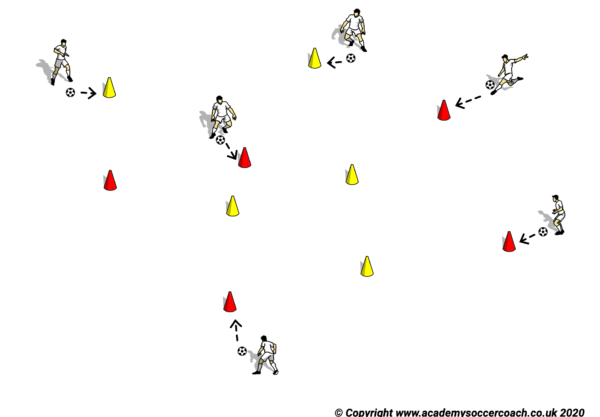This essay is taken from the UC Premier Level 3 curriculum course.
Coach-centric training:
- The “traditional way” in which the sport has been coached
- The coach is the center of attention.
- The coach explains the skill, demonstrates the skill, and allows players to practice the skill.
Player-centered training model:
- A dialog between the player and the coach based on guided discovery.
- The coach makes decisions regarding the subject matter and the design of questions (problems) for the player
- The role of the player is to discover the answers.
The basic characteristic of guided discovery is the logical and sequential design of questions that lead a person to discover a predetermined response. Within the context of soccer training, guided discovery requires the coach to make decisions regarding the subject matter (the learning objectives) and the design of questions (problems) for the player. A session consists of a series of steps, repeated: the experiences of the player, reflection and determining possible solutions, experimenting, and then reflection and analysis of the results.
U.S. Youth Soccer (2012) adds that the guided discovery approach “invites the player to think, go beyond the given information and then discover the correct skills” (p. 41).
A common subject matter in early Zone 1 player development is teaching a player how to strike the ball with the laces.
Coach-centric approach:
- Coach describes techniques, body positions, foot surface angles, approach and movements, and the ball contact.
- After a demonstration, players are paired off and kick the ball back and forth.
- The coach moves in and out of groups making corrections.
Player centered approach:
- Based on a progression of active games.
- The “marbles” game where players have to kick over cones and then retrieve balls.
- Coach engages with individual players using questions (why did the ball go that way), general cues (plant foot should be even with the ball), rehearsals (let’s try to step to our ball and touch with the laces), and changes of distances.
- A progression of the game to an opposed scrimmage.
- Add additional rules (double points for specific cones) to challenge players.
Marbles game with individual cones

Marbles game with defended cones
